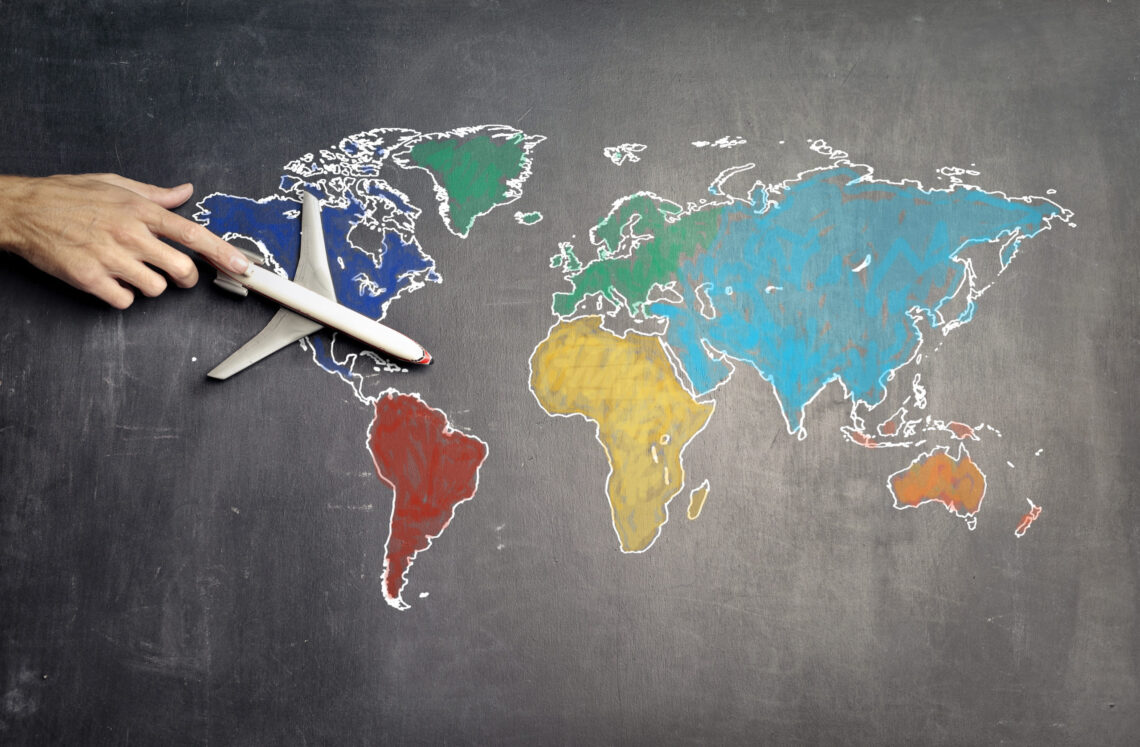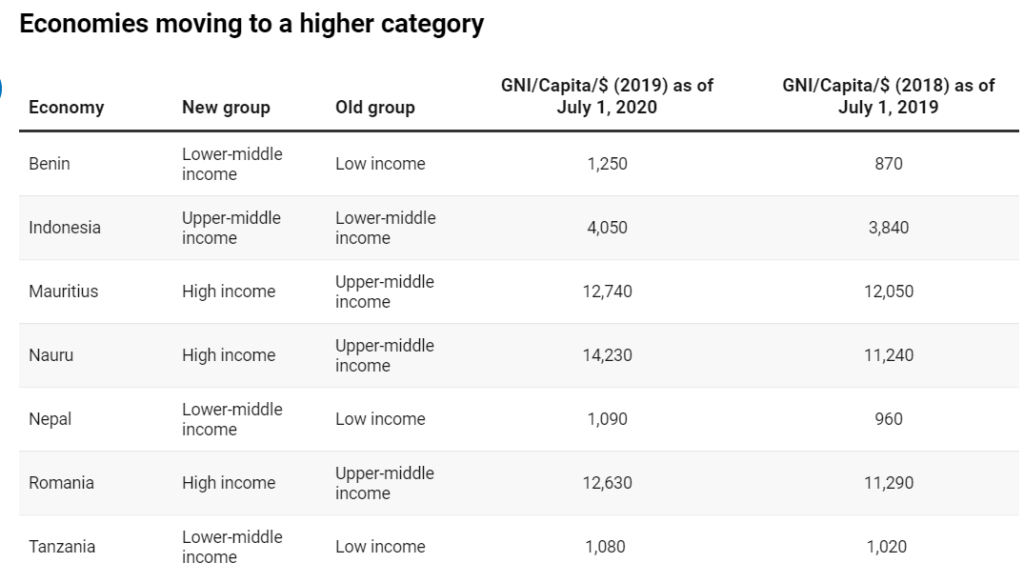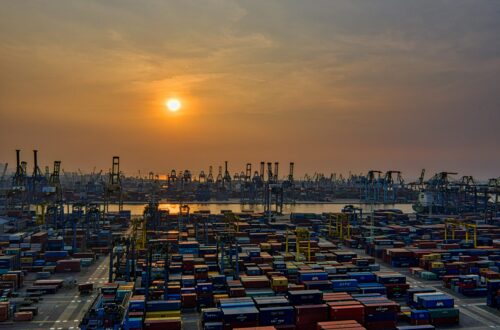
New World Bank Country Classifications by Income Level: 2020-2021
By UMAR SERAJUDDINNADA HAMADEH / World Bank
Updated country income classifications are available here.
The World Bank assigns the world’s economies to four income groups—low, lower-middle, upper-middle, and high-income countries. The classifications are updated each year on July 1 and are based on GNI per capita in current USD (using the Atlas method exchange rates) of the previous year (i.e. 2019 in this case).
The classifications change for two reasons:
- In each country, factors such as economic growth, inflation, exchange rates, and population growth influence GNI per capita. Revisions to national accounts methods and data can also influence GNI per capita. The updated data on GNI per capita data for 2019 can be accessed here.
- To keep the income classification thresholds fixed in real terms, they are adjusted annually for inflation. The Special Drawing Rights (SDR) deflator is used which is a weighted average of the GDP deflators of China, Japan, the United Kingdom, the United States, and the Euro Area. This year, the thresholds have moved up in line with this inflation measure. The new thresholds (to be compared with GNI per capita in current USD, Atlas method) are as follows.

Changes in classifications
The table below lists the ten economies that are moving to a different category. It is important to emphasize that the World Bank’s income classifications use the GNI of the previous year (2019 in this case). Thus, the GNI numbers that are used for this year’s classification do not yet reflect the impact of COVID-19.


National accounts revisions have played a significant role in the upward revision for Benin, Nauru and Tanzania. For Sudan, the GNI series for 2009-2018 has been revised as a result of revisions to the exchange rates. The 2018 GNI per capita figure has been revised down to $840 from the previously published figure of $1,560 (which is listed in the table). Algeria, Indonesia, Mauritius, Nepal, Sri Lanka and Romania were very close to the respective thresholds last year.
More information
More detailed information on how the World Bank classifies countries is available here. The country and lending groups page provides a complete list of economies classified by income, region, and lending status and links to previous years’ classifications. The lending groups (IDA, Blend, IBRD) have also been updated. The classification tables include all World Bank members, plus all other economies with populations of more than 30,000. The term country, used interchangeably with economy, does not imply political independence but refers to any territory for which authorities report separate social or economic statistics.
Data for GNI, GNI per capita, GDP, GDP PPP, and Population for 2019 are now available on the World Bank’s Open Data Catalog. Note that these are preliminary estimates and may be revised. For more information, please contact us at data@worldbank.org.
CREDIT: The Post New World Bank Country Classifications by Income Level: 2020-2021 first appeared on the World Bank Blog on 1st July, 2020.




